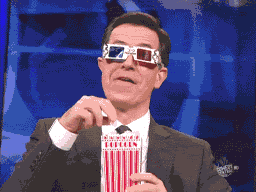Fast or slow shutter speed, how do you decide?
Feb 23, 2024 14:42:07 #
JZA B1 wrote:
Assuming the subject/scene isn't changing quickly and you could go with either faster or slower shutter (adjusting aperture and ISO to compensate and maintain exposure), do you usually go for faster shutter speed or slower?
Any pros and cons on doing it one way vs the other?
Any pros and cons on doing it one way vs the other?
It really comes down to what’s most important, shutter speed, aperture or ISO. Aperture is almost always a consideration for me, shutter speed depends on the situation. If I’m trying to freeze action obviously I need a speed fast enough, otherwise just fast enough to shoot handheld, (which has certainly been mitigated in modern cameras), and ISO is usually of least concern, especially with modern sensors. For wildlife I’ve gone to manual with auto ISO, for other stuff I usually shoot aperture priority and adjust the ISO to achieve the shutter speed needed. I do also shoot a lot of long exposure stuff on a tripod but that’s intentional for the shots I want.
Feb 23, 2024 15:01:34 #
Robertl594 wrote:
Shutter speed is one of the exposure triangle adju... (show quote)
Why would the camera matter?
Feb 23, 2024 15:14:06 #
Robertl594 wrote:
I fail to comprehend what motivates some responses... (show quote)
Thin skinned replies are extra entertaining.

Feb 23, 2024 15:18:14 #
SuperflyTNT wrote:
Why would the camera matter?
"The Camera" is THE sacred icon within UHH Sacred Tradition, which means that a camera question asking "Why" is seriously apostate.
("The Camera" acoarst includes "The Glass".)
Feb 23, 2024 16:32:44 #
scoundrel
Loc: Wytheville VA
Robertl594 wrote:
Shutter speed is one of the exposure triangle adju... (show quote)
Good basic rules here, but I would add a few things. Others have mentioned the rule-of-thumb for minimum shutter speed using full-frame camera of 1/<LensFocalLength> when handholding. You may get by with a slower speed if you are shooting with a telephoto with image stabilization. I never did understand the advantage of image stabilization for wide angle lenses, since 1/30 second (or so; your handholding steadiness may vary) is about as slow as you should go when handholding.
Of course, if your camera is on a sturdy tripod or other support, your subject isn't moving, and you are using a 2-second shutter delay, you can shoot at a shutter speed as slow as you like, especially if you are using the technique called dark frame subtraction so that "hot" pixels don't show up in your image. Many cameras these days will do dark frame subtraction automatically if asked nicely. It takes twice as long as it otherwise would for each picture though, because the camera takes a second picture after the first one so that it has an image with only the hot pixels to subtract from the first one.
If you are taking star pictures, keep in mind that your camera is moving, albeit very slowly, because of the rotating earth. If you aren't using a telescope with a motor drive, this will limit the minimum shutter speed, or maximum exposure time, you can use without blurring the image. I believe that UHH has an astrophotography forum where you can learn more about special techniques for shooting night skies and subjects therein.
If you have a tripod with you that you can't set down for whatever reason, you can still use it to steady your shots. Simply mount the camera to your tripod without extending the legs, but it helps if you spread the legs out from the center column. Hold the assembly by the center column as close to the center of mass as you can conveniently manage. Your technique may attract unwanted attention from human subjects, but the added moment of inertia from the tripod will slow down unwanted rotations of your camera and enable you to shoot "handheld" at a slower shutter speed than you otherwise could. You might also be able to turn the tripod sideways and brace the camera on a nearby wall.
When shooting under low-light conditions, you can often improve the sharpness of your lens by closing it down a little bit. Even half a stop can make a noticeable difference, especially with fast lenses.
I haven't been particularly troubled by increased noise at high ISO settings, but the reduced dynamic range - ability to reproduce detail in both extreme highlights and shadows - may be troubling, in some cases with the shadow detail dropping out altogether. This is another issue to keep in mind when choosing your ISO setting.
Feb 23, 2024 19:14:11 #
scoundrel
Loc: Wytheville VA
SuperflyTNT wrote:
Why would the camera matter?
Primarily in what kinds of photography certain cameras and lenses are best for. Larger images and formats, such as medium or large format film cameras, have bigger images able to capture more detail, but such cameras become really awkward when telephoto lenses and portability are necessary, such as in sports and wildlife photography. Small, unobtrusive cameras are less likely to be noticed and are easier to carry around, hence will be more likely to be available when needed. Street and candid photography are classic uses for cameras like that. Can you imagine a street photographer dragging around a 4 x 5 inch view camera? Yeah, I know; press photographers used to take such cameras on assignment in the early to mid-20th century before grainy images became fashionable and then films improved. Digital photography has largely made wet chemistry obsolete and made possible instant viewing. Kodak and Polaroid are pretty much history now.
Of course you already know all that.
Feb 23, 2024 19:28:13 #
JZA B1 wrote:
Assuming the subject/scene isn't changing quickly and you could go with either faster or slower shutter (adjusting aperture and ISO to compensate and maintain exposure), do you usually go for faster shutter speed or slower?
Any pros and cons on doing it one way vs the other?
Any pros and cons on doing it one way vs the other?
Depends on the subject and your vision of the final piece of work you are capturing . If birds in flight highest shutter you can tolerate , while letting the camera do the heavy lifting using auto ISO in manual mode . Sunrises and sunsets depends on the mood soft moving water slower shutter speed on a tripod . I bracket shutter speed at base ISO after the Sun is up Higher ISO if the sun is just below the Horizon for sunrises . The opposite for sunsets still at base ISO higher as it goes into blue hour or the reds appear still bracketing . There is no right shutter speed for all situations . Experiment it will soon come natural . It always depends on the Subject speeding by or standing still .
Feb 23, 2024 20:00:23 #
delder
Loc: Maryland
Generally doing Available Light Photography, I try to keep the ISO and F Stop Centered, LIGHT PERMITTING.
Feb 23, 2024 20:09:33 #
scoundrel
Loc: Wytheville VA
delder wrote:
Generally doing Available Light Photography, I try to keep the ISO and F Stop Centered, LIGHT PERMITTING.
A seriously asymmetrical aperture will really mess up the bokeh!

Feb 23, 2024 20:17:18 #
Depends what I want, if I want depth of field, I go with a longer shutter so I can have a smaller aperture. If I'm shooting actions I want fast and don't care as much about depth of field. If I want to ensure sharp, I go higher shutter speed to make sure I freeze any movement of subject or camera.
Feb 23, 2024 21:20:36 #
Feb 24, 2024 01:49:27 #
scoundrel wrote:
Primarily in what kinds of photography certain cam... (show quote)
Yes, his comment was in reference to the OP’s question in which camera model doesn’t matter.
Feb 24, 2024 02:50:23 #
scoundrel wrote:
.... 1/30 second (or so; your handholding steadiness may vary) is about as slow as you should go when handholding....
I used to think that until I owned a camera with good IBIS. Shutter speeds slower than 1/10 sec. are realistic and can give sharp photos (assuming that there's no extreme camera movement).
He also wrote:
... If you have a tripod with you that you can't set down for whatever reason, you can still use it to steady your shots...
Using it with one leg extended as a monopod may still be a possibility. Not quite as good as full tripod mode but still very effective. If placing it on the ground or on your shoe isn't a possibility, holding it off the ground would still give a fair amount of steadiness because of the rotational inertia of the monopod.
Feb 24, 2024 02:59:58 #
cjones405 wrote:

Use Quote Reply ↓ under the post that you want to reply to. That way we'll know who you're responding to.
Feb 24, 2024 06:38:01 #
If you want to reply, then register here. Registration is free and your account is created instantly, so you can post right away.



